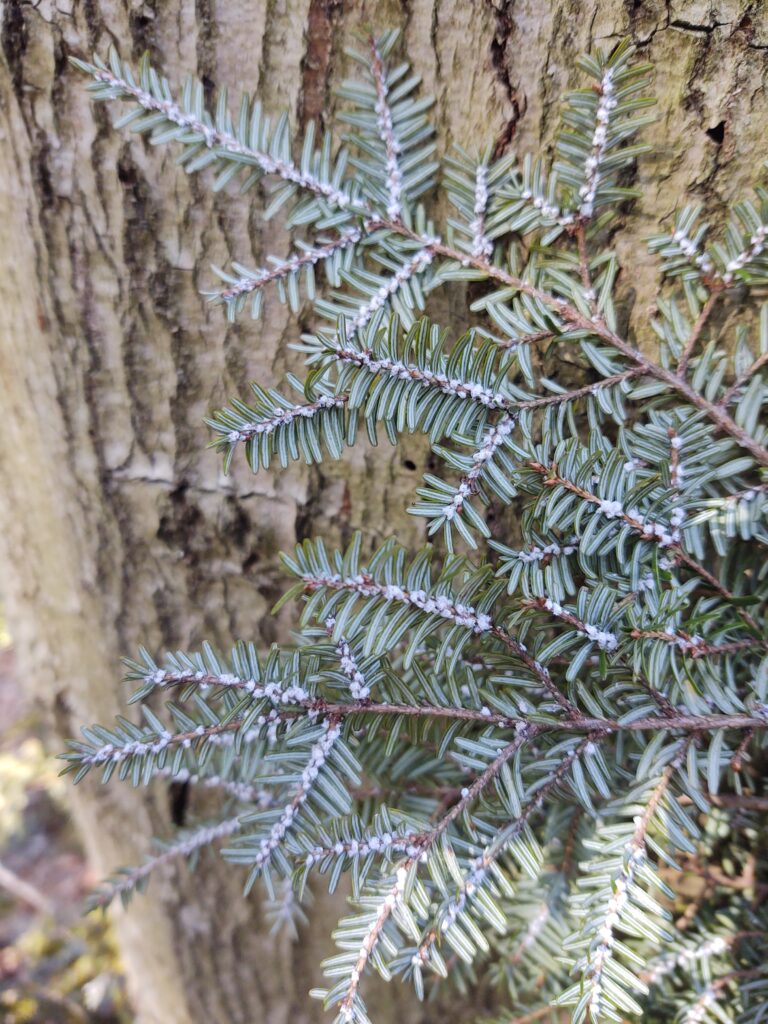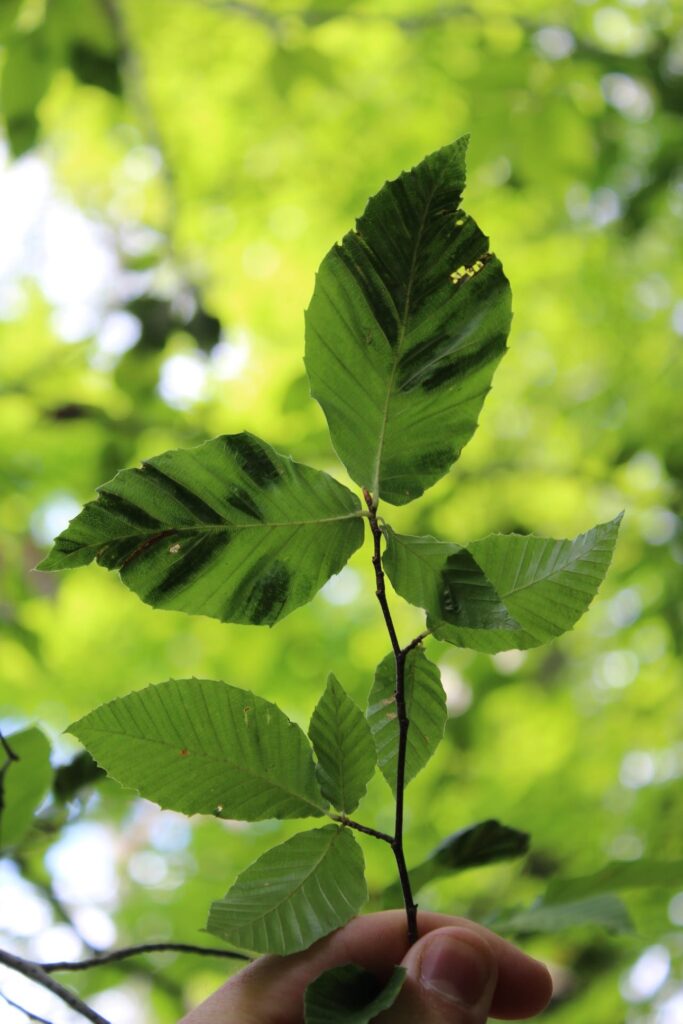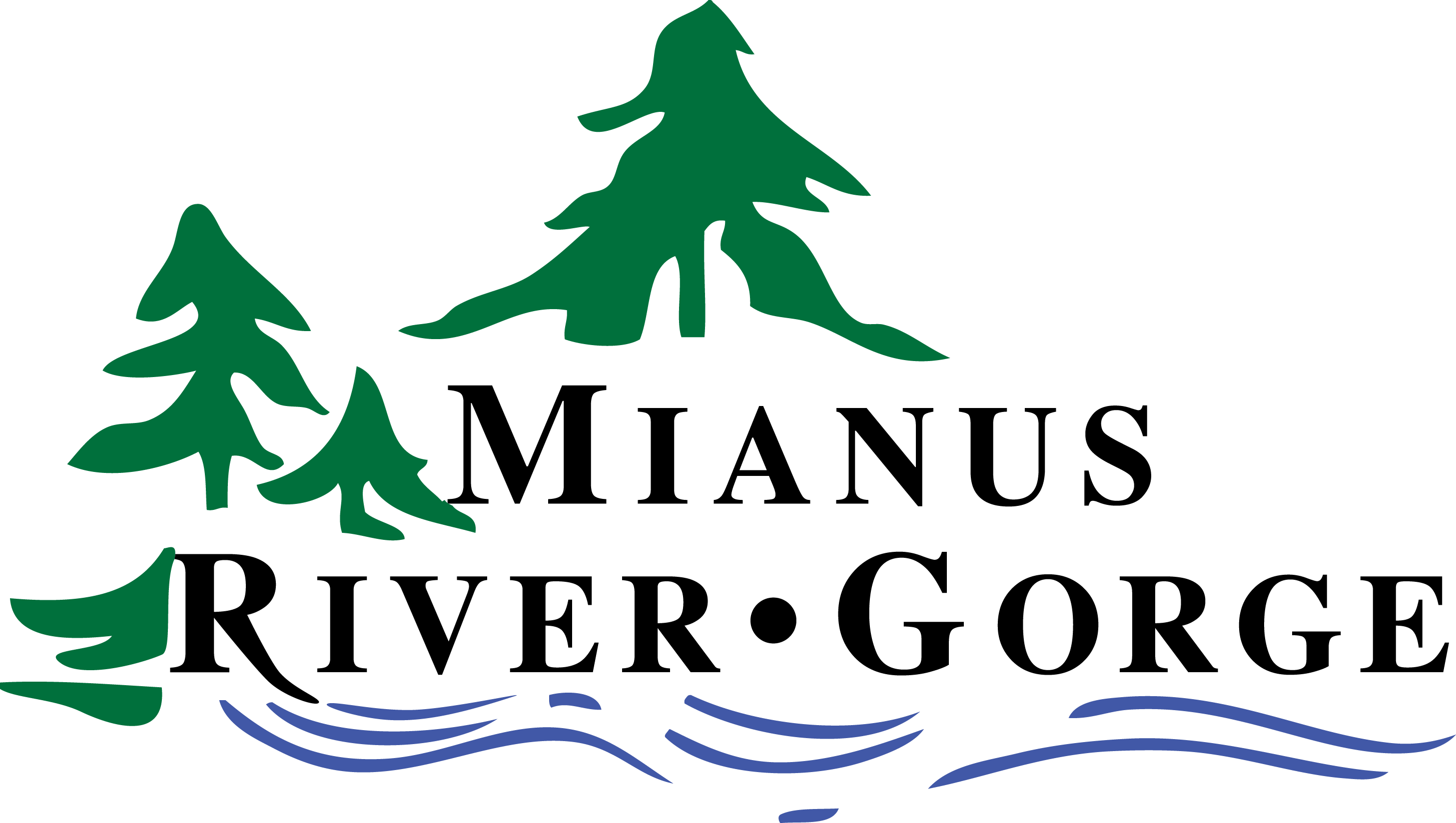Most people are aware of the Chestnut Blight and Dutch Elm Disease of the early 20th century. These invasive fungi forever altered the ecology of eastern forests and the aesthetic of American streets. Introduced pests and pathogens continue to affect our forests, from beech scale and oak wilt to Asian jumping worms and spotted lanternfly. Here are just a few of the forest pests MRG staff are currently dealing with:
HEMLOCK WOOLLY ADELGID

This small aphid-like pest lives, feeds, and reproduces exclusively on hemlocks. The insect kills the buds on infested branches, preventing new growth and eventually killing the tree. This tiny insect has killed millions of eastern hemlock trees since its accidental introduction to Virginia in 1951.
Between 2017-2019, MRG contracted with Trillium Invasive Species Management to treat 2,340 trees using a pesticide solution to kill hemlock woolly adelgid (HWA) developed by our partner, the NYS Hemlock Initiative at Cornell University. Treatments will begin again in Spring 2022. Additionally, MRG and the NYS Hemlock Initiative annually release several hundred biocontrol beetles (Laricobius nigrinus) that prey on the HWA. In 2022, MRG will begin releasing a silver fly (Leucolis argenticollis), which is an effective HWA predator on the West Coast.
EMERALD ASH BORER
The emerald ash borer (EAB) is an exotic beetle of Asian origin first discovered in the US near Detroit, MI, in 2002. This bright green beetle has killed millions of ash trees from Maine to Texas. Like much of the eastern US, this invasive beetle has ravaged ash trees throughout the Gorge, devastating the population of this once abundant tree.
MRG staff are monitoring ash mortality through a program called “Monitoring and Managing Ash” (MaMA), looking for lingering healthy ash trees that may be resistant to EAB. Though woodpeckers and some insects prey on EAB, they are ineffective at reducing the population. MRG plans to work with SUNY ESF and the USDA to determine the feasibility of releasing multiple bio-control parasitoid wasps that attack EAB larvae and eggs with the hope of ash restoration in the future.
BEECH LEAF DISEASE NEMATODE

Discovered in Ohio in 2012, this forest pest, new to the Mianus River Gorge and the region, is not yet well understood. The beech leaf disease (BLD) causes defoliation in American beech trees and can eventually kill them.
Though there are currently no established treatments or control methods for BLD, MRG is working with various partners, including the Lower Hudson Partnership for Regional Invasive Species Management (PRISM), the Environment Monitoring and Management Alliance (EMMA), and NYS DEC to establish long-term monitoring protocols to examine mortality in American beech.
ASIAN LONG-HORNED BEETLE & SPOTTED LANTERNFLY
The Asian long-horned beetle, first discovered in Brooklyn in 1996, is a large black beetle with white spots that can damage and kill a variety of native hardwood trees. The spotted lanternfly, introduced from Asia to Pennsylvania in 2014, is a large leafhopper that will infest and damage a number of economically important plants including hops, grapes, and apples. Though both Asian long-horned beetle and spotted lanternfly have yet to be found in the Mianus River Gorge, MRG staff constantly monitor for the any sign of these pests and will take action if found.
